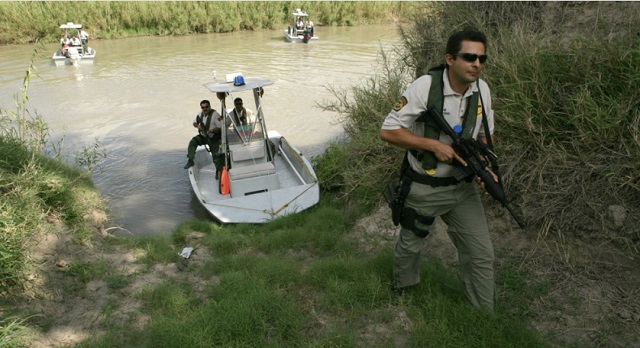Great Reset
More than 12 million illegal border crossers since fiscal 2021

Censorship Industrial Complex
Canadian university censors free speech advocate who spoke out against Indigenous ‘mass grave’ hoax

From LifeSiteNews
Dr. Frances Widdowson was arrested and given a ticket at the University of Victoria campus after trying to engage in conversation about ‘the disputed claims of unmarked graves in Kamloops.’
A Canadian academic who spoke out against claims there are mass unmarked graves of kids on former Indigenous residential schools, and who was arrested on a university campus as a result for trespassing, is fighting back with the help of a top constitutional group.
Dr. Frances Widdowson was arrested and given a ticket on December 2, 2025, at the University of Victoria (UVic) campus after trying to engage in conversation about “the disputed claims of unmarked graves in Kamloops,” noted the Justice Centre for Constitutional Freedoms (JCCF) in a recent news release.
According to the JCCF, Widdowson was trying to initiate a “good faith” conversation with people on campus, along with the leader of OneBC provincial party, Dallas Brodi.
“My arrest at the University of Victoria is an indication of an institution that is completely unmoored from its academic purpose,” said Widdowson in a statement made available to LifeSiteNews.
She added that the “institution” has been “perpetuating the falsehood” of the remains of 215 children “being confirmed at Kamloops since 2021, and is intent on censoring any correction of this claim.”
“This should be of concern for everyone who believes that universities should be places of open inquiry and critical thinking, not propaganda and indoctrination,” she added.
UVic had the day before Widdowson’s arrest warned on its website that those in favor of free speech were “not permitted to attend UVic property for the purpose of speaking publicly.”
Despite the warning, Widdowson, when she came to campus, was met with some “100 aggressive protesters assembled where she intended to speak at Petch Fountain,” noted the JCCF.
The protesters consisted of self-identified Communists, along with Antifa-aligned people and Hamas supporters.
When Widdowson was confronted by university security, along with local police, she was served with a trespass notice.
“When she declined to leave, she was arrested, detained for about two hours, and charged under British Columbia’s Trespass Act—an offence punishable by fines up to $2,000 or up to six months’ imprisonment,” said the JCCF.
According to Constitutional lawyer Glenn Blackett, UVic actions are shameful, as it “receives hundreds of millions of taxpayer dollars annually while it facilitates the arrest of Canadians attempting to engage in free inquiry on campus.”
Widdowson’s legal team, with the help of the JCCF, will be defending her ticket to protect her “Charter-protected freedoms of expression and peaceful assembly.”
Widdowson served as a tenured professor at Mount Royal University in Calgary, Alberta, before she was fired over criticism of her views on identity politics and Indigenous policy, notes the JCCF. She was vindicated, however, as an arbitrator later found her termination was wrongful.
In 2021 and 2022, the mainstream media ran with inflammatory and dubious claims that hundreds of children were buried and disregarded by Catholic priests and nuns who ran some Canadian residential schools. The reality is, after four years, there have been no mass graves discovered at residential schools.
However, as the claims went unfounded, over 120 churches, most of them Catholic and many of them on Indigenous lands that serve the local population, have been burned to the ground, vandalized, or defiled in Canada since the spring of 2021.
Last year, retired Manitoba judge Brian Giesbrecht said Canadians are being “deliberately deceived by their own government” after blasting the former Trudeau government for “actively pursuing” a policy that blames the Catholic Church for the unfounded “deaths and secret burials” of Indigenous children.
As reported by LifeSiteNews, new private members’ Bill C-254, “An Act To Amend The Criminal Code” introduced by New Democrat MP Leah Gazan, looks to give jail time to people who engage in so-called “Denialism.” The bill would look to jail those who question the media and government narrative surrounding Canada’s “Indian Residential School system” that there are mass graves despite no evidence to support this claim.
Censorship Industrial Complex
Top constitutional lawyer warns against Liberal bills that could turn Canada into ‘police state’

From LifeSiteNews
‘Freedom in Canada is dying slowly and gradually, not by a single fell swoop, but by a thousand cuts,’ wrote John Carpay of the JCCF.
One of Canada’s top constitutional legal experts has warned that freedom in the nation is “dying slowly” because of a host of laws both passed and now proposed by the Liberal federal government of Prime Minister Mark Carney, saying it is “up to citizens” to urge lawmakers to reverse course.
In an opinion piece that was published in the Epoch Times on December 15, John Carpay, who heads the Justice Centre for Constitutional Freedoms (JCCF), gave a bleak outlook on no less than six Liberal laws, which he warned will turn Canada into a “police state.”
“Freedom in Canada is dying slowly and gradually, not by a single fell swoop, but by a thousand cuts,” he wrote.
Carpay gave the example of laws passed in the United Kingdom dealing with freedom of online speech, noting how in Canada “too few Canadians have spoken out against the federal government gradually taking over the internet through a series of bills with innocuous and even laudable titles.”
“How did the United Kingdom end up arresting thousands of its citizens (more than 30 per day) over their Facebook, X, and other social media posts? This Orwellian nightmare was achieved one small step at a time. No single step was deemed worthy of fierce and effective opposition by British citizens,” he warned.
Carpay noted how UK citizens essentially let it happen that their rights were taken away from them via mass “state surveillance.”
He said that in Canada Bill C-11, also known as the Online Streaming Act, passed in 2023, “undermines net neutrality.” Bill C-11 mandates that Big Tech companies pay to publish Canadian content on their platforms. As a result, Meta, the parent company of Facebook and Instagram, blocked all access to news content in Canada.
“The Online Streaming Act undermines net neutrality (all online content being treated equally) and amounts to an aggressive expansion of government control over the internet and media companies. The CRTC now has broad power over what Canadians watch, hear, and access online, deciding what is discoverable, permissible, or even visible,” noted Carpay.
Carpay also warned about two recent bills before the House of Commons: Bill C-2, the Strong Borders Act, Bill C-8, and Bill C-9, as well as the Combating Hate Act.
He cautioned that Bill C-2, as it reads, “authorizes warrantless demands for subscriber data and metadata from online providers.”
“Bill C-2 should be called the Strong Surveillance Act, as it gives sweeping powers to a host of non-police government officials to conduct warrantless searches,” warned Carpay.
He observed how Bill C-2 would grant law enforcement “unprecedented powers to monitor Canadians’ digital activity,” without any “judicial oversight.”
“Any online service provider—including social media and cloud platforms, email domain hosts and even smaller service providers—would be compelled to disclose subscriber information and metadata,” he warned.
When it comes to Bill C-8, or The Critical Cyber Systems Protection Act, Carpay warned that if passed it would “allow government to kick Canadians off the internet.”
“The government’s pretext for the Critical Cyber Systems Protection Act is to ‘modernize’ Canada’s cybersecurity framework and protect it against any threats of ‘interference, manipulation, disruption or degradation,’” wrote Carpay.
“Sadly, it remains entirely unclear whether ‘disinformation’ (as defined by government) would constitute ‘interference, manipulation, disruption or degradation’.”
Lawyer warns new laws ‘grant government unprecedented control’
Bill C-9, the Combating Hate Act, has been blasted by constitutional experts as allowing empowered police and the government to go after those it deems have violated a person’s “feelings” in a “hateful” way.
Carpay, who has warned about this bill and others, noted that when it comes to Bill C-9, it affects Canadians’ right to religious freedom, as it “removes needed protection from religious leaders (and others) who wish to proclaim what their sacred scriptures teach about human sexuality.”
“Marc Miller, Minister of Canadian Identity and Culture, has stated publicly that he views certain Bible and Koran passages as hateful. Bill C-9 would chill free speech, especially on the internet where expression is recorded indefinitely, and particularly for activists, journalists, and other people expressing opinions contrary to government-approved narratives,” he wrote.
“This law also vastly increases the maximum sentences that could be imposed if a judge feels that the offence was ‘motivated by hatred,’ and creates new offences. It prohibits merely displaying certain symbols linked to hate or terrorism in public, and extends criminal liability to peaceful protest activity.”
Carpay said that both C-8 and C-9 together “collectively grant government unprecedented control over online speech, news, streaming services, and digital infrastructure.”
He said that the Liberal federal government is “transforming Canada’s centuries-old traditions of free speech and privacy rights into something revocable at the pleasure of the CRTC, politicians, and bureaucrats,” adding that Canadians need to wake up.
“Laziness and naivete are not valid reasons for failing to rise up (peacefully!) and revolt against all of these bills, which are slowly but surely turning Canada into a police state,” he wrote.
Carpay said that Canadians need to contact their MPs and “demand the immediate repeal of the Online Streaming Act and the Online News Act,” and “reject” the other bills before the House.
When it comes to Bill C-9, as reported by LifeSiteNews, the Canadian Constitution Foundation (CCF) launched a petition demanding that a Liberal government bill that would criminalize parts of the Bible dealing with homosexuality under Canada’s new “hate speech” laws be fully rescinded.
The amendments to Bill C-9 have been condemned by the Canadian Conference of Catholic Bishops, who penned an open letter to the Carney Liberals, blasting the proposed amendment and calling for its removal.
-

 Business1 day ago
Business1 day agoArgentina’s Milei delivers results free-market critics said wouldn’t work
-

 Business2 days ago
Business2 days agoState of the Canadian Economy: Number of publicly listed companies in Canada down 32.7% since 2010
-

 espionage16 hours ago
espionage16 hours agoCarney Floor Crossing Raises Counterintelligence Questions aimed at China, Former Senior Mountie Argues
-

 International2 days ago
International2 days agoDOJ fails to fully comply with Friday deadline for Epstein files release
-

 Bruce Dowbiggin2 days ago
Bruce Dowbiggin2 days agoHunting Poilievre Covers For Upcoming Demographic Collapse After Boomers
-

 Alberta2 days ago
Alberta2 days agoAlberta’s new diagnostic policy appears to meet standard for Canada Health Act compliance
-

 Business11 hours ago
Business11 hours agoTaxing food is like slapping a surcharge on hunger. It needs to end
-

 Business1 day ago
Business1 day agoDeadlocked Jury Zeroes In on Alleged US$40 Million PPE Fraud in Linda Sun PRC Influence Case



